Keith Offord, Rhug’s ornithologist, recently held a bird watching morning on the estate…
It was a glorious morning following a prolonged dry spell. We gathered at the drive-thru and after introductions and sorting of binoculars we headed towards the Stable Wood.
Before crossing the road we noted a couple of common species – Jackdaw, the smallest of the crow family with an onomatopoeic (name sounds like the call) and some House Sparrows which were sitting on wires by the buildings. The opportunity was taken to compare females and males which differ with House Sparrow.
As we entered the wood we were immediately greeted by a Nuthatch which was busy going in and out of a nest box. Superficially similar to woodpeckers but unrelated, they feed mainly on wood-boring invertebrates but are also regular visitors to bird feeders. The extensive nest box scheme is not only a benefit to Nuthatches but also to a migrant newly in from West Africa, the Pied Flycatcher.

Perfectly on cue, a male Pied Flycatcher appeared in front, clearly drawn by another nest box which it was singing by. This bird could not have been more obliging, allowing prolonged views through the scope.
The opportunity was taken to discuss some interesting points about Pied Flycatchers, the size of the white spots above the bill of the male being an indicator of his machismo.

Other birds spotted as we walked the drive included Great Spotted Woodpecker, Blackbird and another migrant, the Chiffchaff. Dressed in olive and buff Chiffchaffs are probably very overlooked but the repetitive two-syllable song is totally unmistakeable. Thanks to the leaf cover not yet being extensive we enjoyed great views as a male serenaded.
It is, in virtually all cases that the males of songbirds do the singing, the purpose of which is to attract females and repel other males. For those species which don’t sing, other means of achieving the same result are employed such as display flights or, in the case of woodpeckers, drumming.
A Mistle Thrush was singing high in the trees, a slightly mournful song which is regularly delivered in bad weather as well as good.
Another nest box was clearly of interest to Pied Flycatchers and we watched a female taking in nesting material which includes leaves, grasses and very thin strips of bark. The nest box scheme, now over 50 boxes has been a great asset, providing greatly increased nesting opportunities for several species. Janice and John Dale have been very active in making this happen and this initiative is one of many manifestations of Lord Newborough’s embracing approach to wildlife.
We reached the feeders which were busy, sunflower hearts being an absolute magnet to a variety of species including Siskin, Greenfinch, Goldfinch, House Sparrow, Nuthatch and Chaffinch, to name a few. As we were watching, a Treecreeper was spotted, working its way up a trunk like a small mammal.
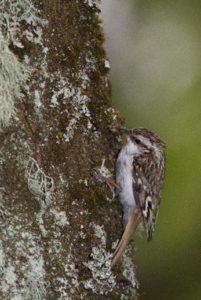 Somewhere high in a tree behind the short song of a Redstart could be heard and after a scan the bird was located. Once it was in the scope it became possible to see the exotic orange breast and black face.
Somewhere high in a tree behind the short song of a Redstart could be heard and after a scan the bird was located. Once it was in the scope it became possible to see the exotic orange breast and black face.
The occasional Buzzard was turning in the air, no doubt picking up thermals while a distant Mistle Thrush was spotted in the field and a pair of Stock Doves flew past. As we crossed through the large trees the lilting cherry whistle of a Blackcap could be heard and with considerable effort, views through the scope were possible as it paused.
We headed towards the lake where there were both Coot and Moorhen plus a Little Grebe which showed briefly before disappearing, unlike two grey Herons which were poised over the edges. Perhaps the prize for display should be awarded to the male mute Swan which was clearly not going to tolerate the impudence of Canada Geese and with wings raised menacingly it was in hot pursuit. This defensive stance was due to the pair of swans having five small cygnets.
We crossed back over the road and made our way along a hawthorn-lined lane towards Glanalwen. We paused to have a look at a mixed gathering of Lesser Black-backed and Herring Gulls in a ploughed field. They were in a variety of stages of development, a process which takes four years for the larger gull species. We also had a look at the herd of bison which included a new calf.
Hedgerows which had, at one time, been removed have been restored, providing shelter for livestock and nesting/feeding opportunities for birds such as a pair of Dunnocks – once confusingly called ‘Hedge Sparrows’ but are unrelated.
Continuing towards the river, a Willow Warbler was singing high in a very leafy Sycamore. It was impossible to locate but fortunately another was found singing from telephone wires. Almost identical to a Chiffchaff in appearance the Willow Warbler has a very distinct song – a sweet descending arpeggio, totally different from the song of Chiffchaff. We walked along the edge of the river Alwen noting the very low level. A Garden Warbler was singing from the opposite bank but not possible to locate, however a Grey Wagtail was more obliging and sat on wires.
As we returned to the cafe, we paused to look at newly-fledged Song Thrushes which was being fed by the adults. Many species of bird are nidicolous – that is when the young remain in the nest until they are fully grown. The reverse of this are species such as wildfowl, game birds and waders where the young leave the nest as soon as the eggs hatch. These species are nidifugous and take weeks or even months for the young to become fully grown.
A perfect morning was concluded with a very tasty lunch in the cafe. Many thanks to all for good spotting, fine humour, and delightful company.
Keith Offord
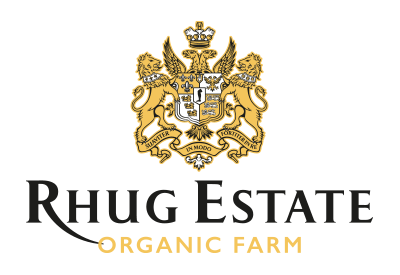



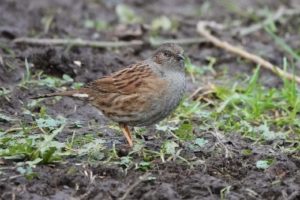
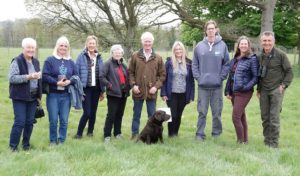



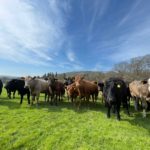 Organic Beef
Organic Beef